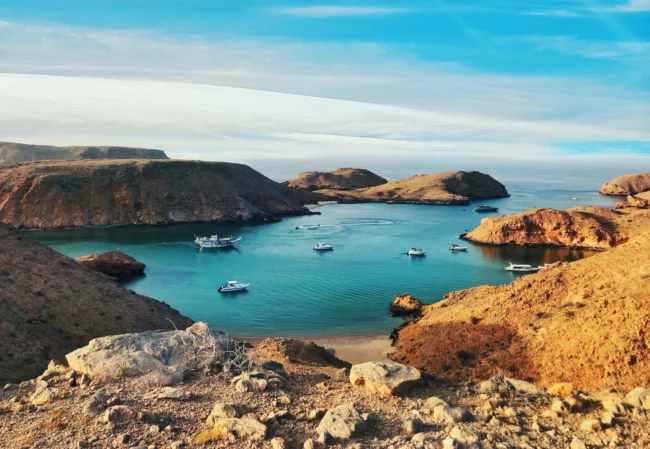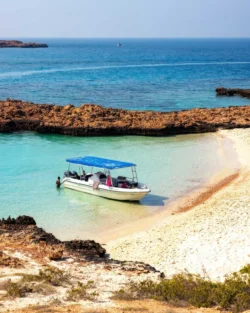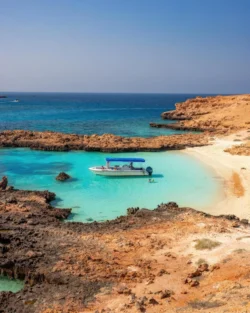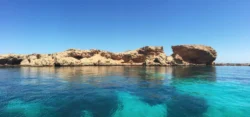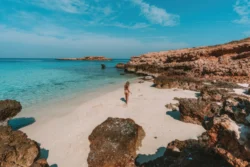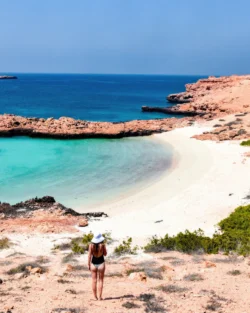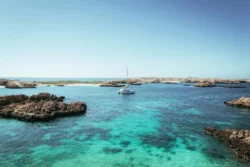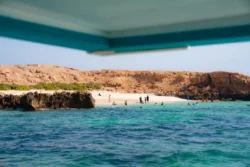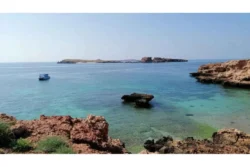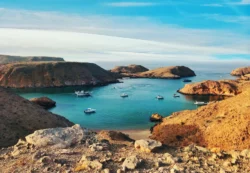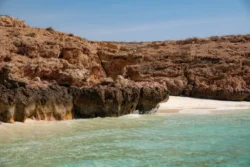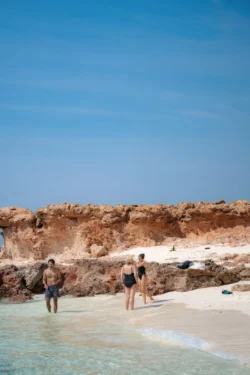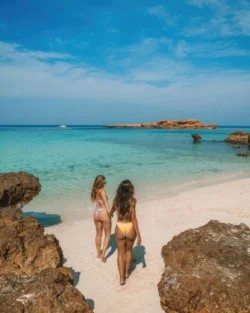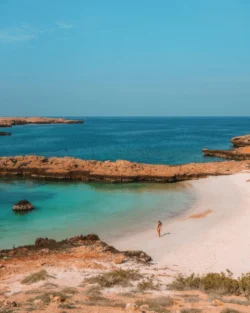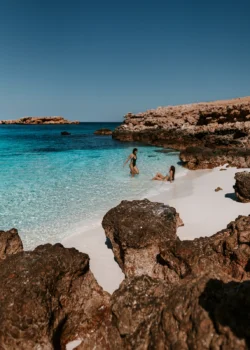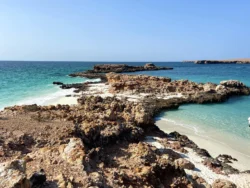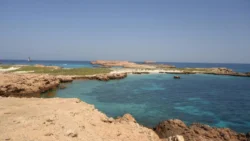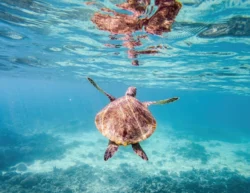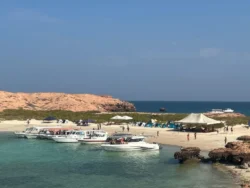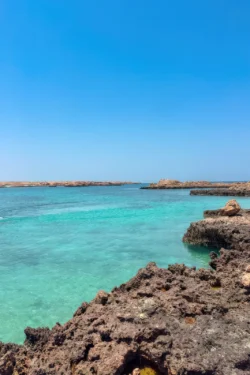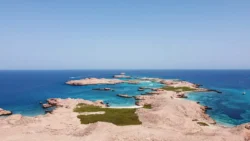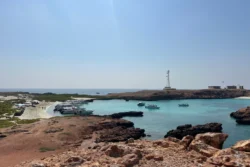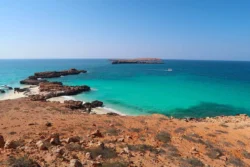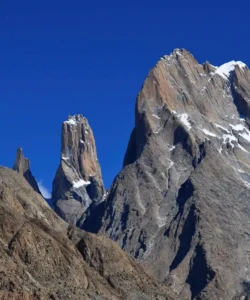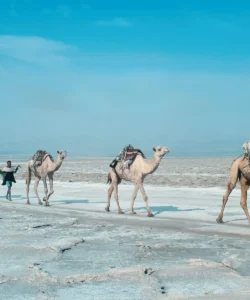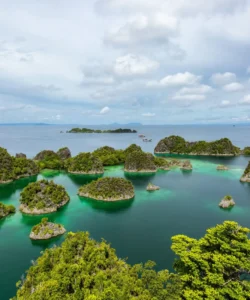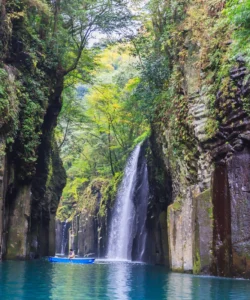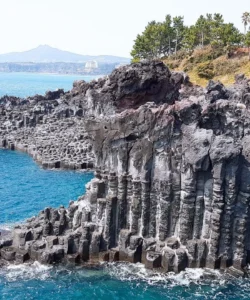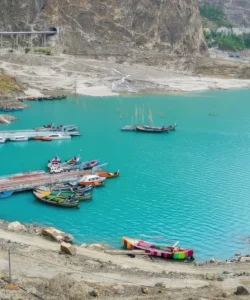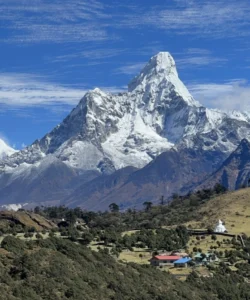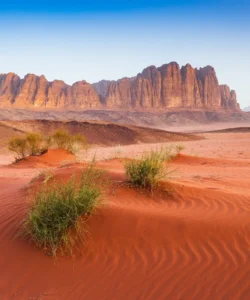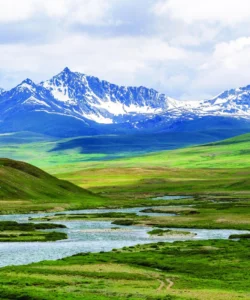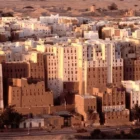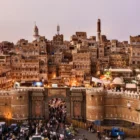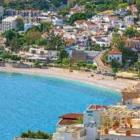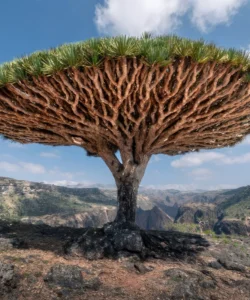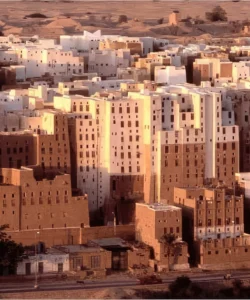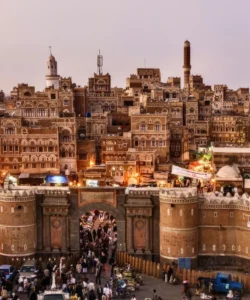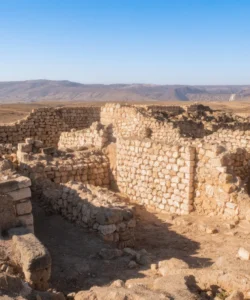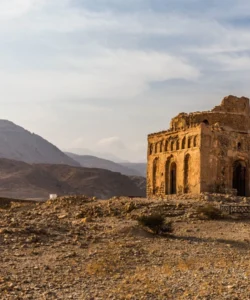The Daymaniyat Islands Nature Reserve, also known as Al Dimaniyat Islands, is a breathtaking archipelago off the coast of Oman, celebrated for its pristine marine ecosystems and untouched natural beauty. This protected reserve is a haven for diverse marine life and migratory birds, offering an unparalleled experience for nature enthusiasts.
Listen to an introduction about Daymaniyat Islands Nature Reserve
Name and Address
- Name: Daymaniyat Islands Nature Reserve (Arabic: جزر الديمانيات الطبيعية) or Al Dimaniyat Islands Nature Reserve.
- Address: Situated off the northern coast of Oman in the Gulf of Oman. The archipelago is approximately 16-18km offshore, located between the towns of Seeb and Barka, west of Muscat.
How to Get There
Access to the Daymaniyat Islands is regulated to preserve its delicate ecosystem, and a permit is required for all visitors.
- By Boat Tour (Recommended): The most common and recommended way to visit is by booking a tour with a licensed operator. These tours typically depart from:
- Al Mouj Marina (The Wave Marina) in Muscat: The most popular departure point.
- Seeb Port: Approximately 40 minutes from Muscat International Airport.
- Al Sawadi Beach Resort: Further along the coast.
- The boat journey usually takes around 30-45 minutes, depending on the departure point. Tour operators generally handle the necessary permits for you.
- By Private Boat (with Permit): If you plan to use your own boat, you must apply directly for a special permit from Oman’s Environment Authority. Electronic permits can be obtained online through their portal.
- Restricted Land Access: To protect nesting sea turtles and migratory birds, landing on the islands’ beaches is strictly prohibited from May 1st to October 31st each year. During this period, visitors can still enjoy snorkeling and diving in the surrounding waters. Camping is only permitted on specific islands (Al Jabal Al Kabeer and Al Jawn) from November 1st to April 30th, and also requires a permit.
Landscape and Natural Features
The Daymaniyat Islands are a testament to pristine natural beauty, often referred to as “the hidden jewel of the Middle East” or “the Maldives of the Gulf.”
- Archipelago Composition: The reserve comprises nine uninhabited islands: Kharabah, Hayout, Jabal Al Kabeer, Al Jabal Al Saghir, Al Mamlahah, Aloumiya, Qisma, Al Joun, and Awlad Joun. They span a total area of approximately 203km2 (100hectares of land area).
- Geology: The islands feature distinctive rocky limestone formations and ancient coral reefs. To the north, they slope steeply towards the sea, reaching depths of over 25 meters, while to the south, they are flanked by shallow sandy seas with extensive coral reefs.
- Pristine Beaches: The islands boast stunning white sandy beaches and crystal-clear turquoise waters.
- Terrestrial Flora: Despite their arid appearance, the terrain supports about 15 species of wild plants, densely covering parts of Al Kharaaba and Al Jibaal Al Kibaar islands, providing crucial nesting cover for birds.
- Rich Marine Ecosystem: The underwater world is exceptionally vibrant, with diverse and well-preserved coral reefs. These reefs support over 100 species of coral and more than 300 species of fish, making it a world-class destination for snorkeling and diving.
What Makes It Famous
The Daymaniyat Islands Nature Reserve is renowned globally for several significant reasons:
- Protected Marine Reserve: It was established as a protected nature reserve by Royal Decree in 1996, emphasizing its critical role in preserving marine biodiversity. It is also part of a globally recognized UNESCO-protected biosphere reserve.
- Turtle Nesting Site: The islands are a crucial nesting site for endangered Hawksbill turtles (250-300 annually) and are also frequently visited by Green turtles, highlighting its international importance for sea turtle conservation.
- Exceptional Marine Life: It’s a paradise for divers and snorkelers, offering the chance to swim among vibrant coral gardens, schools of tropical fish (like parrotfish, clownfish, butterflyfish), stingrays, moray eels, blacktip reef sharks, and occasionally, even whale sharks (especially from July to October).
- Bird Sanctuary: The islands are an Important Bird Area (IBA), serving as an essential nesting ground for thousands of marine birds in summer, including Ospreys, Red-billed Tropicbirds, Sooty Gulls, Bridled Terns, Roseate Terns, and White-cheeked Terns.
- “Maldives of the Gulf”: Its pristine white sandy beaches, crystal-clear waters, and vibrant underwater world have earned it comparisons to more famous tropical paradises, making it a highly sought-after destination for tranquil escapes.
- Eco-Tourism Destination: The reserve champions sustainable tourism, with strict regulations in place to ensure the preservation of its natural sanctuary. This focus on conservation contributes to its growing fame as a responsible travel destination.
Differences from Some Other Attractions
The Daymaniyat Islands Nature Reserve offers a distinct experience compared to other Omani attractions, focusing primarily on marine and bird conservation rather than historical structures.
- Focus on Marine Ecosystem: Unlike historical sites such as Bahla Fort or Al Jalali Fort, which highlight Omani heritage and architecture, the Daymaniyat Islands are celebrated for their unparalleled marine biodiversity, pristine coral reefs, and status as a critical breeding ground for turtles and birds.
- Uninhabited and Protected: The islands are completely uninhabited, maintaining a raw, natural allure. Access is strictly controlled, with permits required and seasonal restrictions on landing to protect nesting wildlife. This contrasts sharply with many other tourist destinations that might have developed infrastructure or less regulated access.
- Activities Centered on Nature: Activities are primarily focused on eco-tourism, such as snorkeling, diving, birdwatching, and regulated camping. There are no historical ruins, bustling souqs, or cultural performances as you might find in towns like Nizwa.
- Unique Underwater Museum: In 2024, the Daymaniyat Islands introduced the Underwater Military Equipment Museum, the first of its kind in Oman. This innovative initiative aims to enhance biodiversity and support ecotourism by creating new coral reef habitats, offering a unique diving attraction not found elsewhere.
- Absence of Terrestrial Mammals: While rich in marine life and bird species, the islands do not host terrestrial mammals, further emphasizing their unique ecological niche as a marine and avian sanctuary.
Daymaniyat Islands Nature Reserve Photos:
